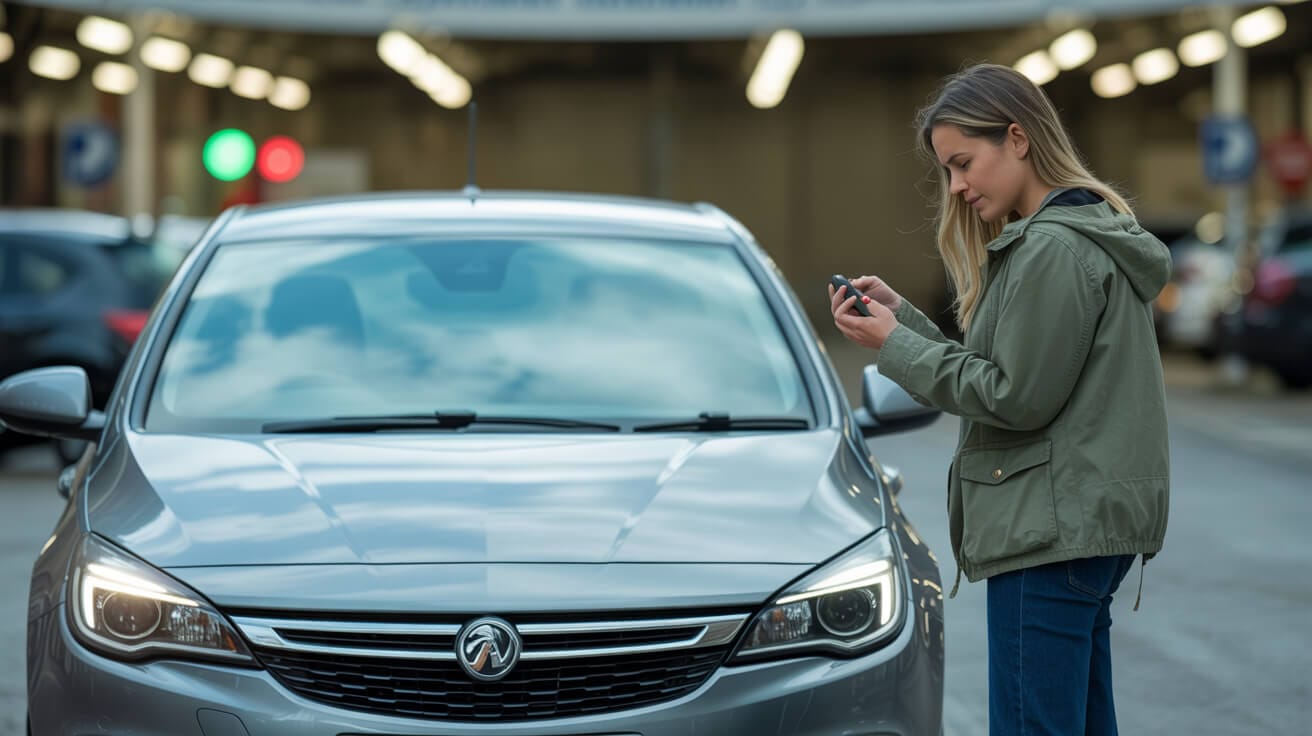Why Is My Car Suddenly Ignoring the Key?
Losing access or facing a “key not recognised” message on your car isn’t just inconvenient—it grinds your day to a halt and raises big, immediate questions: Is it the key? Is it the car? Is it something simple or is an expensive fix on the horizon? Most car key failures don’t start with broken parts or sabotage—they start from minor disruptions: a dying battery, hidden damage from water, a moment of electronic noise, or even a missed software handshake. Before stress takes over, it pays to strip things back to the core causes and actions that get you moving again.
Sometimes, the smallest oversight—a flat coin cell, a stray drop of rain—turns high-tech access into a silent blockade.
Which Immediate Checks Save Time and Headaches?
Respond fast, but methodically. Most owners can resolve things by walking through these essentials:
- Swap Out for Fresh Batteries: in every key—low voltage derails remote signals instantly.
- Test Your Spare Key: —if the backup works, your diagnosis is over.
- Hold the Fob at the Reader or Push Start Pad: —some systems revert to passive mode.
- Try Gently Moving the Steering Wheel: when inserting or recognising the key; wheel locks block electronic reads.
- Change Location: —leave nearby shopfronts or parking garages, as RF noise sometimes jams signals.
Pausing to work down this list does more than dodge a recovery call. It clarifies whether you’re facing a momentary issue or a true fault—before panic (and unwanted cost) set in.
When Does Owner Error Outrank System Faults?
Modern keyless systems are powerful, but they’re not immune to basic mistakes:
- Storing Your Key in Metal Cases: kills radio waves dead.
- Letting Sensors Get Wet: —after a rainy spell or car wash—tricks doors into thinking no key is present.
- Standing Too Far From the Vehicle: —proximity fobs have strict range limits.
- Ignoring Dashboard Warning Symbols: —red or orange icons flag low batteries or ID mismatches before full failure.
Close attention to small details outpaces any software or hardware fix for most users. The right move is to get mechanical first—battery, position, and habits—before suspecting deeper trouble.
What’s Actually Happening Inside the Car When the Key Isn’t Recognised?

There’s an unseen chain between your hand and the car’s engine, built from a tech stack designed to keep both convenience and security at full tilt. This stack is only as strong as its weakest link: the fob’s signal, the vehicle’s sensors, wiring in the doors, and the handshake with immobiliser modules. A glitch anywhere stalls the entire access chain—what starts as a dash warning or a silent no-start becomes a full-system lockout if ignored.
Modern keys are computers, not cut steel; behind every click is an entire network quietly demanding your proof.
Where Do Most Keyless Entry Systems Break Down?
Understanding the failure chain keeps you in control. The common breakdowns:
- Weak or Corroded Fob Contacts: prevent power flow—even a new battery won’t help.
- Antenna Failures in the Door or Console: cut off the key’s “I am here” handshake.
- LIN/CAN Bus Faults: can mute commands between modules—from simple unlocks to full immobiliser clearance.
- Failed Software Updates or Aftermarket Module Instals: risk de-syncing the car’s security stack from your key.
- Harsh Environment Exposure: —damp, vibration, or sharp temperature swings—can physically or electronically “age” a system overnight.
If your spare key also stops working, these deeper issues are most likely at play.
How Does the Car Decide “Key Not Recognised”?
Every modern vehicle uses multiple checks—radio handshake, rolling code validation, low-frequency proximity, and immobiliser sync. On new digital platforms (phone as key, BLE, NFC), even your smartphone’s battery life or background app permissions can disrupt a session.
Key steps:
- LF (125kHz) field wakes the key/fob
- Key replies via UHF/EU433 radio
- BCM or Gateway deciphers code and authorises unlock or start
- Immo module cross-checks every step for prior pairing
A hiccup anywhere? The process stalls and “no key” is the message returned. Only careful systems thinking—methodical diagnosis—can chase down which link needs repair.
Is It Safe to DIY-Fix, or Is Now the Time for a Specialist?

It’s fair to want to fix things yourself—sometimes to avoid cost, often because you’re in the middle of nowhere when your key acts up. Many basic faults are owner-serviceable, and a spare battery, a changed habit, or a quick move away from interference is all it takes. But when things get more complex—warning icons on the dash, no luck with spares, or signs of electrical/immobiliser error—the stakes escalate fast.
Knowing when to quit (and call in the pros) saves more than time—it keeps you from irreversible, costly mistakes.
What DIY Fixes Are Smart—and Where Should You Stop?
Check these limits:
- You swapped batteries and the fob clicks, but nothing happens: —risk: failed antenna or unread key.
- Your spare fails too: —risk: immobiliser chain or bus error.
- Any dashboard symbol remains red: —risk: permanent lockout or higher repair bill.
- You need to reset modules, or delete/add keys: —risk: voiding warranty, locking out all access if done wrong.
If you’re unsure, the right move is to pause. With immobiliser and digital keys, guesswork can compound the issue.
What Can a Specialist Offer That DIY Can’t?
Accredited auto locksmiths bring more than tools:
- OEM-authorised diagnostics: that read module faults directly.
- Audit trails for every action, with photos and logs: .
- Legal compliance: that protects your warranty, data, and privacy rights.
- Proven processes: —from non-destructive entry to immobiliser programming—in line with UK standards (ISO26262, ISO/SAE21434).
More than the right fix, you gain protection: if something fails later, you have written data to validate claims, speed up warranty help, or support insurance.
What Role Do Security and Privacy Play in Vehicle Access Today?

Letting anyone access your vehicle’s entry modules, keys, or immobiliser is a security and data privacy issue—not just convenience. Reputable providers move beyond technical solutions; they operate to compliance standards that safeguard your car against misuse, resale confusion, and tomorrow’s digital threats. It’s a framework, not a slogan: every legitimate specialist should use encrypted job records, daily-updated access logs, and consent-driven workflows for every fix or programming session.
Trust is engineered, not promised—security-first providers guarantee traceability, not just a smile.
Which Standards and Practices Protect Owners Like You?
Look for providers who deliver:
- Mandatory ID and ownership checks: —no service without proof.
- Audit trails of “who did what, when,”: stored for years.
- GDPR-grade data handling,: from minimal personal data in records to secure, time-limited storage.
- Clear menu pricing: before a tool is picked up.
- Demonstrations and acceptance sign-off: before your car is returned.
Expect providers to walk you through every remedy, never rushing or hiding the technical trail. Gaps here are signals to look elsewhere.
Why Is Post-Job Documentation Essential?
Fast fixes are good; written documentation is insurance for the future. File every job summary, evidence photo, and programming log—these are as crucial as registration papers when selling or resolving warranty disputes. Robust documentation sets Autolocks Ltd and other best-in-class operators apart from generic callouts or unverified “mobile techs.”
Not sure if a potential provider is up to standard? Ask for a sample job audit trail—they should be eager, not evasive.
How Does the Tech Landscape Shape Key Recognition and Car Security?

As vehicles grow “smarter,” so do both their protections—and their weak spots. Entry systems now use everything from traditional blade keys to rolling-code remotes, proximity fobs (PKE), and digital “phone as key” profiles over BLE, NFC, or UWB. Each credential adds complexity, demanding new diagnostic workflows, tools, and compliance checks. More features mean more points of failure—and more avenues for unauthorised actors, unless providers lock down standards at every step.
Today’s car key isn’t just a tool—it’s a digital passport, woven with unique handshakes, encryption, and evolving risk.
What Credentials Exist, and What Goes Wrong?
Common UK vehicle families (VAG, Ford, BMW, Nissan, Toyota, PSA, Renault, Tesla, more) line up as follows:
- Mechanical keys: (e.g., HU66, HU101, HU92) still open many doors—if aligned, lubricated, and cut to code.
- Transponder chips: (ID48, ID46, 4D, ID47/49 AES, Toyota 70/80) activate immobilisers via 125kHz signals.
- Remote entry: (EU433) fobs use rolling codes and low-frequency wakeups.
- Smart/Digital keys: leverage BLE/NFC/UWB—phone as key, tap-to-start, guest profiles.
Breakdown risks stack up here: broken contacts, misshapen blades, dead coin cells, corrupted pairing memory, water ingress, and even mismatched trim modules after repairs. Each case demands a unique diagnostic habit.
Why Are Networks and Modules Now as Important as Hardware?
It’s not just the key—it’s the mesh inside: body control modules (BCM), door control (LIN/CAN gateways), immobiliser logic, and cloud-linked telematics. A simple harness fault at the door grommet can chalk up as many failures as a lost fob. Techs must read module error codes, wire status, and protocol synchronisation, not just “does the fob click?” Advanced entry (digital, wireless, app-based) requires support for cryptographic handshaking, secure OTA updates, and lifecycle management for keys/fob/app combos.
Generic garages can’t keep up here—proof-driven, brand-accredited partners like Autolocks Ltd are the new gold standard.
How Can Owners Ensure Repairs and Keys Last Beyond Today?

The real secret to avoiding future headaches? Routine habits and robust aftercare. Replace batteries yearly, keep your spare somewhere safe and dry, and ask for documentation after every service—no job is truly complete without paper or digital proof. Make use of any review or KPI stats offered; track your provider’s warranty rate and response time. This way, you enforce standards on the service economy and protect both your asset and your peace of mind.
Lasting reliability isn’t luck—it’s the direct result of attention to process, documentation, and proactive habits, not just fixes.
What Daily Habits Cut Down Key Recognition Incidents?
A few simple changes stack up:
- Store keys away from high-interference/radio environments: (Wi-Fi, routers, chargers, etc.).
- Change your remote’s battery at an annual routine.:
- Request evidence and acceptance for all new keys, fobs, or module work.:
- Keep documentation handy: —it accelerates insurance, finance checkouts, or warranty disputes later.
- Stay alert for new warning lights: —don’t ignore dashboard signals, even if all seems well.
Good habits mean one less surprise, and a lower chance your day ends with a locked-out text.
Why Is Aftercare the New Mark of a True Specialist?
The best providers—Autolocks Ltd sets the bar here—offer:
- Free aftercare: for reasonable post-job issues.
- Referral routes for digital key or software updates: as vehicles advance.
- Clear, ongoing access to previous job evidence and documentation.:
- Review feedback loops: that actually lead to process tweaks.
Choose partners measured by repeat business, not by one-off fixes, and you’ll see how reliability and value compound the longer you own your vehicle.
What Makes Booking Autolocks Ltd the Secure, Futureproof Solution?

It’s not “locksmithing” as it was—a van, a toolbox, and a best guess. Autolocks Ltd has built the modern UK playbook: only owner-verified, always non-destructive first, photo-documented from arrival through aftercare, and with service standards you can trace or audit months later. They’re known for more than fixes; they change how you think about trust: secure data, transparent pricing, audit-ready processes, and a warranty programme where the stats aren’t just claims but published monthly.
Security, skill, and standards—a service where every repair is logged, every upgrade is signed, and every owner stays in the loop.
How Does Autolocks Ltd Elevate the Owner Experience?
Expect nothing less than:
- Menu-based quotes and transparent SLAs on every job.:
- Tech identity confirmed pre-arrival.:
- Non-destructive approach as the starting line for all services.:
- Digital, fob, or mechanical work documented and explained.:
- Follow-up guidance and access to records whenever needed.:
Their service design is built for the world’s most demanding vehicles, but the real innovation is in making every owner feel—in the moment and long after—that their security, privacy, and convenience came first.
Why Is Autolocks Ltd the Best Bet When Your Car Ignores Its Key?
Choose Autolocks Ltd when your car stops recognising the key—any make, from blade-cut to digital, across the UK. If you want accredited expertise, documented compliance, transparent menu pricing, and aftercare that stands up to audit and the test of time, we’re ready to make your day easier, safer, and more secure.
Frequently Asked Questions

What turns a routine drive into a sudden “Key Not Recognised” emergency?
A “key not recognised” alert is rarely an out-of-the-blue malfunction; it’s your car flagging a silent breakdown in the handshake between its access system and your digital credential. Beneath the surface, routine habits—skipping timely battery changes, letting condensation creep into fob contacts, or standing too close to heavy radio sources—gradually corrode the link. Most drivers overlook subtle cues until plans unravel and costs mount.
One missed warning or a few days’ battery delay can turn routine access into a roadside crisis.
How Do Everyday Actions Lead to Failure?
The most common causes are simple and preventable:
- Coin cell batteries, especially CR2032, lose voltage invisibly; a drop of 0.2 volts is all it takes.
- Storing keys in metal cases or alongside power banks kills the signal before it reaches your car.
- Wet hands, damp pockets, or quick wipes after cleaning introduce moisture that corrodes key PCB contacts.
- Shopfront security or traffic signals can jam or drown out the “how are you?” handshake between key and car.
- Keeping the spare too close to the main fob at home interferes with readiness when you finally need backup.
The domino effect begins in micro-moments. Ignore small warnings—sluggish unlocks, intermittent errors, lights that linger—and you escalate from inconvenience to full system lock.
Where Should You Start Troubleshooting?
- Swap in a fresh battery with clean, dry fingers.
- Test the spare key, at arm’s length from objects.
- Move just a few metres from potential radio interference before retrying.
- If in doubt, choose awareness over improvisation—a single misstep can trigger immobiliser locks not easily reversed by DIY.
How does your car “decide” to reject a key—what’s going on beneath the surface?
Every time you unlock a door or try to start the engine, a split-second conversation takes place. The car’s control module wakes up, listens for encrypted signals from your key or app, cross-references authentication codes, then finally checks if hardware, firmware, and access routines all align. If even one step misses the mark, the system cuts access and refuses the drive.
Your key is more than a piece of metal—it’s a digital passport, and a single glitch at any link stops you cold.
What Are the Critical Points of Failure in Modern Systems?
- The vehicle sends a low-frequency (LF) wake signal; no reply means game-over, regardless of fob quality.
- The fob’s code, transmitted on UHF/BLE/NFC/UWB, must match a rolling lockfile—any mismatch halts entry.
- Cluster, BCM, and immobiliser modules speak over CAN, LIN, or auto-Ethernet networks. If a node is down, the whole dialogue fails.
- Firmware updates or module swaps done without proper re-authorisation can desync security memories, locking out all keys.
- Network issues—broken door harness wires, tired solder joints, or corroded pins—silently kill critical signals.
When both your main and spare key fail, you need field diagnostics that go much deeper than trial and error. Only professionals equipped with OEM-grade tools and system maps can spot and repair invisible digital handshakes.
Where does responsible DIY stop—and when is it critical to call Autolocks Ltd?
Safe DIY covers the simple, visible spectrum: battery swaps, drying off a damp key, and moving away from obvious radio interference. But symptoms like persistent immobiliser alerts, blank dashboards, unresponsive start buttons, or digital key lockouts mean you’ve crossed into risk territory.
Fixing half a problem is worse than none—risks and costs balloon if you guess past the safe limit.
What Is Safe to Attempt Yourself?
- Change fob or device battery (maintaining polarity and cleanliness).
- Carefully dry and clean key blades and fob internals.
- Test a verified spare in an uncluttered environment.
Stop immediately if:
- Dash lights persist after battery or fob swaps.
- Both main and spare keys fail identically.
- Error codes or warning sounds appear during startup attempts.
Why Trust Autolocks Ltd for System-Level Issues?
- Only techs with full OEM diagnostics tackle network or module errors confidently.
- Every intervention is logged—photos, tools, timestamps tied to your case.
- Entry and programming always begin with owner and vehicle ID verification.
- First-time-fix and non-destructive entry are non-negotiable standards.
- All compliance steps, from quote to aftercare, shield your insurance and future resale value.
Knowing who opened your car, with what, and when isn’t luxury—it’s legal, safe, and ensures each repair is an asset, not a risk.
Why are security, audit trails, and regulatory compliance essential for every UK car key or access repair?
Accessing and programming today’s vehicles is tightly regulated. Technicians are responsible for not just opening locks—but for safeguarding your vehicle’s identity, data, and value. Without proof of compliant service (ID checks, encrypted journals, retention schedules, and step-by-step audits), you’re exposed to insurance refusals, legal challenges, and resale headaches.
If your service record isn’t provable, your protection is only as strong as the last undocumented job—always demand more.
What Standards Define a Trusted Provider?
- Every intervention—entry, programming, software update—requires photo proof, job audit, and consent logged before tools touch the vehicle.
- Transparent menu pricing and fixed quotes are routine: no last-minute fee hikes.
- Data is encrypted and purged after prescribed periods; your privacy is respected, not sold.
- Aftercare and warranty documentation are provided after each callout—these are your proof for the future.
Providers operating outside these lines do not offer a “deal”; they place your assets in silent jeopardy.
How Should Documentation Be Handled?
- Always request electronic and paper records for each visit.
- Store audit logs, step-by-step photos, and completed job sheets securely.
- Insist on phrases of warranty and data practices—these fill gaps against future disputes.
A secure record isn’t bureaucracy—it’s the backbone of your insurance, resale, and trust ecosystem.
What technical and process complexities make modern “Key Not Recognised” faults so challenging to solve?
From classic cars with cut blades to electric vehicles with app-based keys, every authentication layer adds both security and complexity. Your “key” is now a modular system: blade, transponder chip, cryptographic handshake, silent radio layers, and networked electronic pathways—all of which must function flawlessly and in unison.
Modern cars coordinate more digital minds than some tech companies—solving faults requires a field negotiator, not a guesser.
Where Do Most Faults Stay Hidden?
- Key blades wear imperceptibly or go out-of-spec from past copy attempts.
- Transponders inside the fob may shift out of position or suffer unseen water damage.
- PCB tracks within remotes crack, killing signals even when batteries test “OK.”
- App-based keys (BLE/UWB/NFC) can be undone by device settings or hidden OS updates.
- Critical network failures—usually within door grommet harnesses or unspotted during module swaps—mimic fob faults but require deep electronic tracing.
Only by following a non-destructive, evidence-led protocol—beginning with environmental checks and finishing with compliance-driven documentation—can durable repairs be delivered.
When Is a New Fob Not the Fix?
If every key, battery, and module tests fine but the issue persists, your vehicle is telling you the problem lives on the network or “system brain” level. Professional diagnosis means tracing every link, not just swapping the visible pieces.
How does Autolocks Ltd consistently deliver secure, future-proof repairs—and what makes their aftercare a lasting asset?
Longevity in vehicle access is engineered through protocol, not chance. Every Autolocks Ltd job pairs technical diagnosis with procedural transparency: ID and consent verification, skill-matched engineer selection, full non-destructive discipline, and an evidence pack handed to you at every handover. Whether deploying a digital key, repairing a fob, or updating system modules, you’re never left without a proof-laden paper and data trail.
Cars change hands, devices get replaced, and mistakes happen—but the right documentation turns every fix into a secure building block for your car, data, and time.
What Habits and Offers Build True Durability?
- Store backup batteries and spare keys in defined, accessible spots—act before failures, not after.
- Protect fobs from heat, moisture, and being pressed under heavy objects inside bags or pockets.
- Insist on aftercare packs: step-by-step guides, photos, receipts, and future contact scripts.
- Address dashboard warnings immediately—delays only raise risk, expense, and inconvenience.
With Autolocks Ltd, every action is measureable—right tech, robust compliance, warranty-supported repairs, and a full handover that prepares you for the unexpected.
Choosing a provider is more than solving today’s problem; it’s an investment in future safety, liquidity, and peace of mind. Start strong, finish stronger—every time you drive.
What unique value and peace of mind does Autolocks Ltd provide during “Key Not Recognised” crises?
Autolocks Ltd’s approach does not stop with opening doors—it’s a chain-of-custody workflow that traces every decision, from your initial call and ID check to the last warranty signature. Each job is routed only to engineers with the exact skills for your make and model. You’re protected by transparent pricing, privacy-first data policy, and aftercare packs as enforceable as your purchase contract.
You don’t just get back on the road—you get an asset, a record, and peace of mind as guaranteed as your start button.
Why Do Owners, Insurers, and Dealers Trust Autolocks Ltd Above All Others?
- Every fix begins with a rigorous ID protocol, then matches you only to credentialed engineers and tools proven to solve your specific technology.
- Each journey—key, fob, or digital—ends with signed proof of work, photo logs, and an aftercare pack you control.
- Pricing is clear, coherent, and locked before the first tool activates.
- Full support for evolving technologies including BLE/UWB/NFC smartphone keys means today’s solution remains tomorrow’s security.
- Continuous QA, insurance, and compliance audits keep both your data and your ISOfit vehicle future-proofed.
Choose the only UK car locksmith where compliance, excellence, and evidence converge. Don’t wait for a lockout disaster; build resilience and reputation with every call—Autolocks Ltd turns every repair into documented confidence and future proof.







